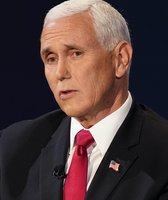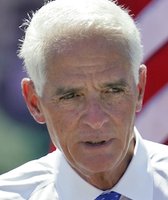Stand up for the facts!
Our only agenda is to publish the truth so you can be an informed participant in democracy.
We need your help.
I would like to contribute

(Shutterstock)
If Your Time is short
Feeling stressed by the news during the time of the coronavirus? We have three pieces of advice: Read with intention. Beware of false hype, both positive and negative. Look to history and science for important perspective.
It’s seldom been harder to discern what’s true, whom to trust and what’s reliable than in the age of the coronavirus pandemic — nor has solid information ever been as important.
I sort out fact from fiction every day, and I want to help you do it, too. As editor-in-chief for PolitiFact, I’m monitoring a lot about COVID-19: the latest science on exposure and immunity; projected timetables for social distancing and the development of vaccines; President Donald Trump’s latest news conferences; what the nation’s governors are doing; and what’s happening with jobs, the stock market and the economy. Information is developing and changing, and there’s always something more to look at.
Humans seek information to feel informed and safe. When there are no new developments, or important questions can’t be answered, it leaves us unsatisfied. So we keep looking for information that isn’t there, and that creates frustration. It happens to both journalists and citizens during ordinary times, but it’s intense during high-stress events such as a pandemic.
Still, we can be savvy news consumers, and even find calm in how we engage with the news. I’m following three principles that bring order to how I approach my own news seeking.
Getting our news shouldn’t be a passive activity, spoon-fed to us by our phone or the headlines glimpsed on a TV. Instead, we should take control by focusing our attention and engagement.
Spending quality time with a comprehensive, curated news report is better than the same time scrolling through feeds. A newspaper like the Tampa Bay Times, or national newspapers like the New York Times, the Washington Post or the Wall Street Journal offer comprehensive coverage. When online, I do my best to read all the main stories, pushing myself, if necessary, to reach the end.
For TV, try appointment viewing. The network nightly newscasts are more popular than ever -- and with good reason; they’re a concentrated dose of the day’s important events in an accessible format. Or, turn to the lengthier PBS Newshour, which begins with a good roundup of daily events, then covers a spectrum of topics, including longer pieces on world news, culture and economics.
I try to ration my intake of cable news or opinion journalism. It can be fun and at times informative, but it also tends to play on emotions and preconceived ideas about how the world works. This is an important time for critical thinking, not indulging prefab political views that may or may not fit the circumstances. I look for news that shows me the world as it is, not how I would like it to be.
Dramatic events often get politicized, and the novel coronavirus pandemic is no different. It’s good to remember that while watching even official information. It’s a delicate balance; we need to trust authoritative sources but not be gullible when it comes to misinformation. Studies suggest that people with a solid background of factual knowledge about a topic are usually not fooled by misinformation and hoaxes.
I select sources by considering their track records and missions. At PolitiFact, we find information from the U.S. Centers for Disease Control and the World Health Organization to be reliable and cautiously framed. The two groups tend to emphasize best practices, such as handwashing for at least 20 seconds, while clearly stating when science is uncertain or still developing.
President Trump has given many news conferences, but he has a strong tendency to put a positive spin on his own and his administration’s actions. It’s heartening to his supporters, but when it comes to factual accuracy, most of his statements need double-checking.
Trump has long been a spontaneous speaker, and his communication style hasn’t changed during the pandemic. Most recently, he mused aloud about the possibility of using disinfectants inside the body to kill the virus: "Then I see the disinfectant knocks it out in a minute, one minute. Is there a way we can do something like that, by injection inside or almost a cleaning?" But scientists, medical professionals and even manufacturers all emphatically warn against ingesting disinfectants.
At PolitiFact, we’d actually heard it before: Trump’s comments were a repeat of earlier online fake remedies, including drinking bleach. (To state the obvious, do NOT do this.)
If Trump paints a rosy picture, there are other corners of the internet wanting to portray the pandemic in a much darker light. Typically, these messages suggest that the virus was created in a lab as a bioweapon as a way to intentionally harm America. But there is nothing to support that the virus is man-made or a plot. Indeed, scientists say the novel coronavirus has the specific markers of a virus that moved from animals (most likely, bats) to humans. Still, those who want to hear conspiracy theories can easily find online echo chambers. This is harmful, and if our loved ones are doing it, we should correct them as gently as possible.
In all of our news seeking, it’s important to keep a balanced perspective. People’s lives and health are at stake, and we must take great care. But we are not the first people to face a pandemic, and we likely won’t be the last.
Studying the history of pandemics is strangely comforting. Though it happened over 100 years ago, the influenza of 1918 is likely the most apt example for current times, and it’s been documented admirably in books like "The Great Influenza: The Story of the Deadliest Pandemic in History," by John Barry, and "America's Forgotten Pandemic: The Influenza of 1918," by Alfred Crosby. In the United States, it is estimated that 500,000 died due to the flu pandemic.
History shows that societies can and do survive mass illnesses. Things get better — more treatment, fewer deaths — when communities come together calmly to care for the sick and take steps to limit transmission. Then and now, the best-trained medical authorities of the time knew that social distancing was critical to preventing the spread of illness.
Scientists who have studied pandemics have ideas for containment that are well-documented and make sense. In the absence of a vaccine (likely more than a year away), the instructions are widespread testing, contact tracing and quarantines. Testing identifies the infected; contact tracing (it means finding people who may have come in contact with a sick individual) determines the spread; quarantines limit the spread. These are easy ideas to understand but hard to implement, and I’m looking for everything I can on these topics.
Testing, for example, is hindered by lack of supplies and chemicals called reagents that identify the virus. Contact tracing will require local governments to hire more people trained in public health tracking techniques and a significant public education campaign. Quarantines will depend on having places for people who are sick to stay inside and away from other people. History says that the end of the pandemic won’t arrive until millions more people get the virus (creating herd immunity) or a vaccine is developed.
As a society, the United States will either handle the pandemic well or it will handle it poorly. History suggests that the virus will be with us for sometime — and then it will die out. We might get back one day to what we consider normal, but it will likely be quite awhile, and it might be a different type of normal than what came before. As a fact-checker for PolitiFact, my mission has been to give people the information they need to govern themselves in a democracy. My hope is that good information will give us the ability to govern ourselves well.
Our Sources
PolitiFact





















































